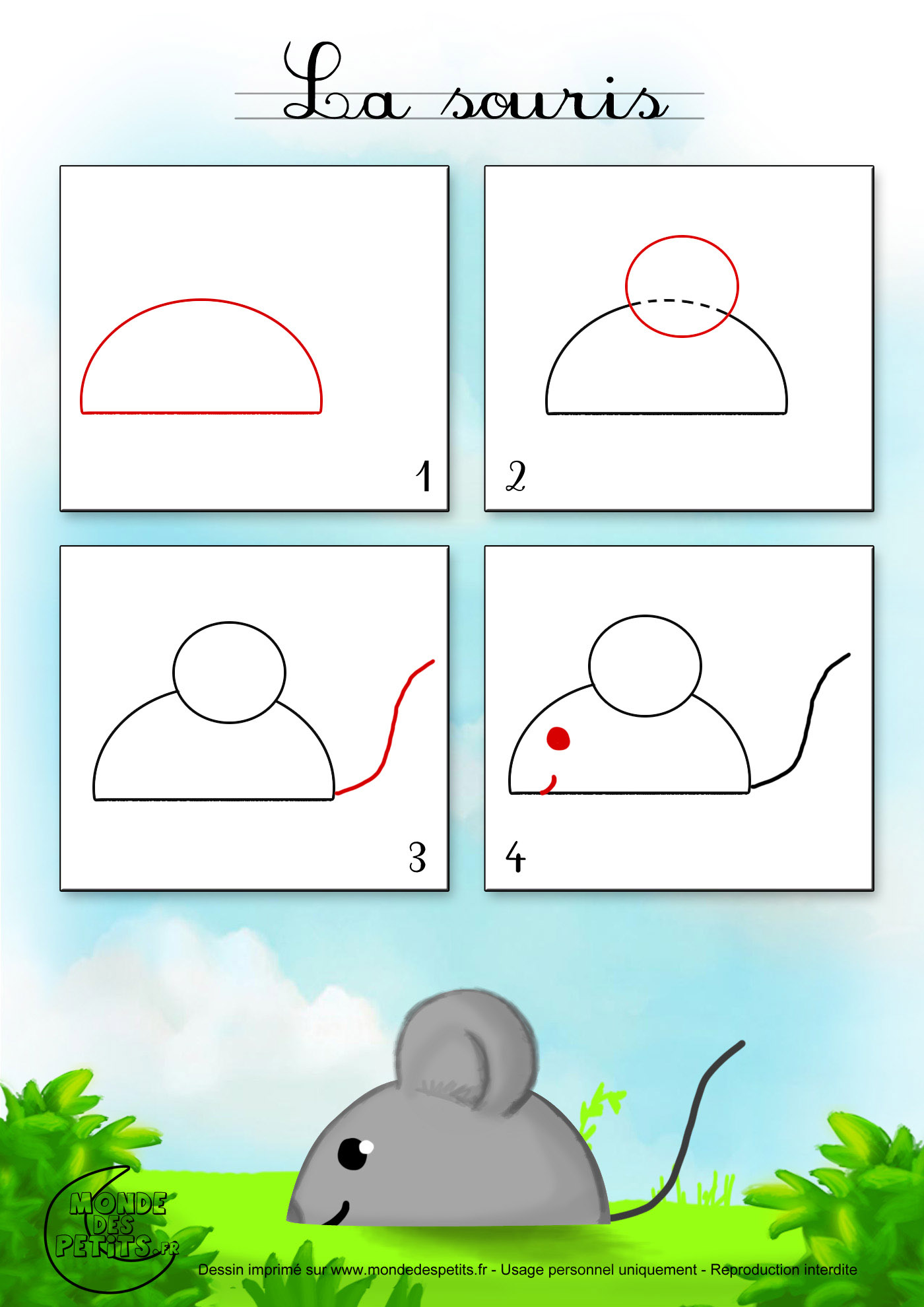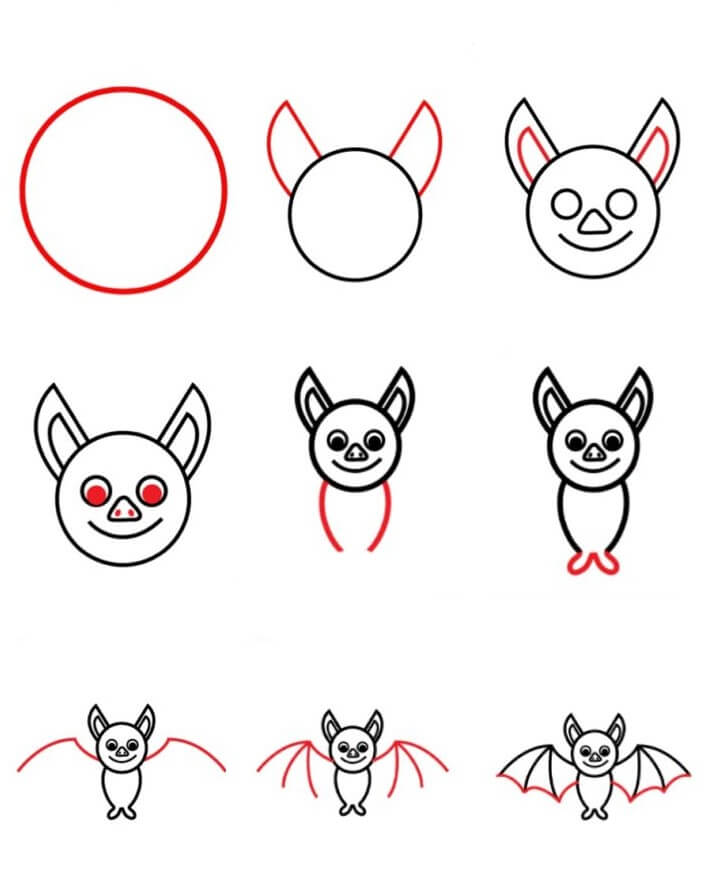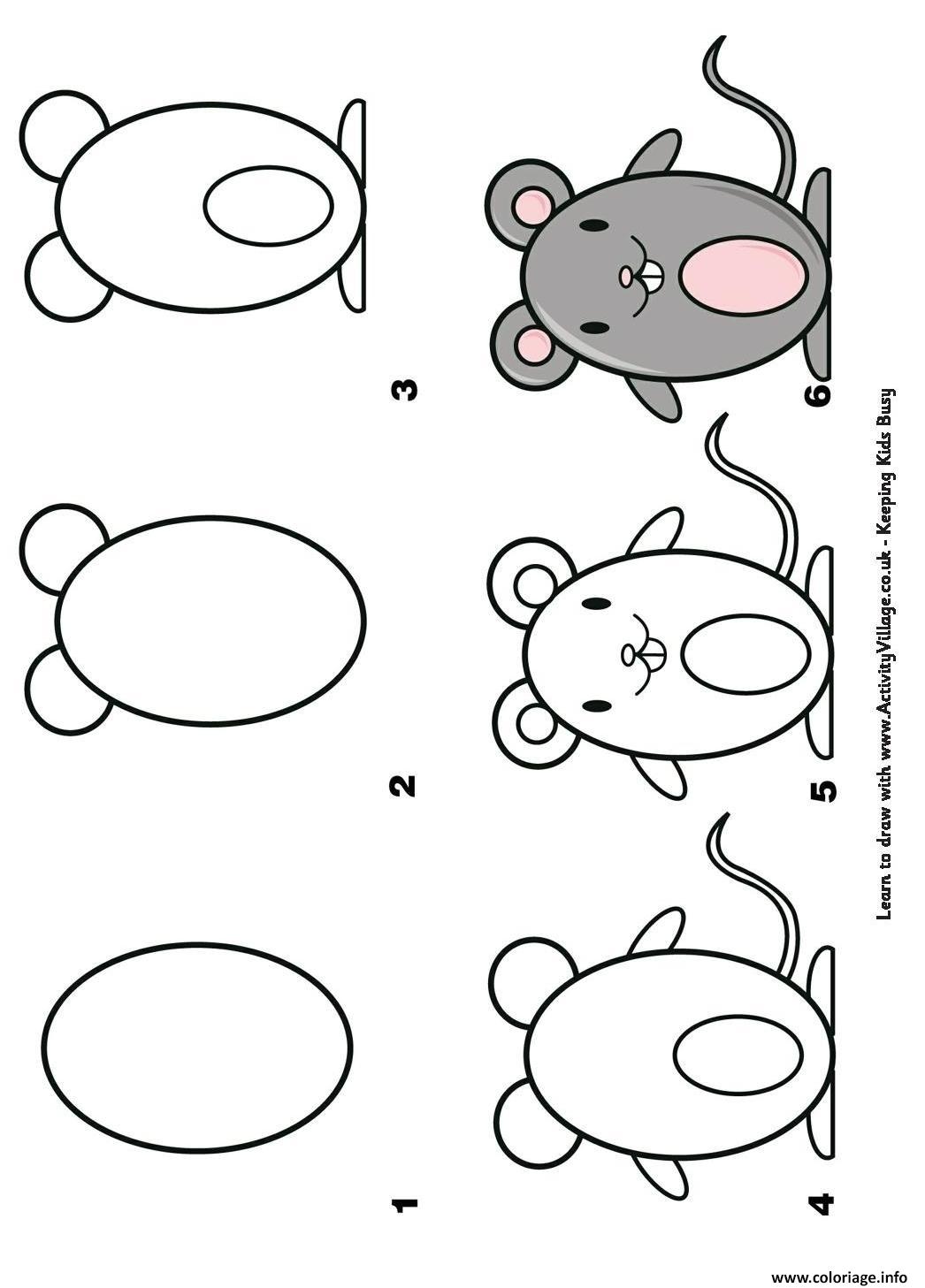Are you ready to unleash your inner artist and learn how to draw adorable mice effortlessly? Whether you're a beginner or someone looking to refine their skills, this guide will walk you through the process step by step. Drawing cute mice doesn't have to be complicated. With a little practice and creativity, you'll be sketching charming little critters in no time. So grab your pencil, paper, and let's dive into the world of easy mouse drawing.
Let's face it—art can seem intimidating at first, but it doesn't have to be. The beauty of drawing cute mice lies in their simplicity. You don't need to be a professional artist to create something adorable. By breaking down the process into manageable steps, you'll soon discover that even the simplest shapes can transform into something magical. From round ears to tiny whiskers, these critters are all about charm and personality.
And here's the best part: drawing mice is not only fun but also therapeutic. It's a great way to relax, unwind, and express yourself creatively. Whether you're doodling for fun or working on a more serious art project, mastering the art of drawing cute mice will add a touch of whimsy to your creations. So, are you ready to get started? Let's go!
Read also:Avery Leigh Leak
Here's a quick overview of what we'll cover in this guide:
- Biography of Cute Mouse Art
- Tools You'll Need
- Understanding Basic Shapes
- Step-by-Step Drawing Guide
- Tips and Tricks for Beginners
- Avoiding Common Mistakes
- Adding Details and Personality
- Exploring Digital Mouse Drawing
- Practice Techniques to Improve
- Finding Inspiration for Your Art
The Fascinating Journey of Drawing Cute Mice
Before we dive into the technical aspects, let's take a moment to appreciate the history and charm of drawing cute mice. Believe it or not, mice have been a popular subject in art for centuries. From ancient cave paintings to modern-day cartoons, these tiny creatures have captured the hearts of artists and audiences alike. Their small size, round ears, and expressive eyes make them the perfect subject for cute and whimsical art.
Some of the most iconic characters in pop culture, like Mickey Mouse, are based on the charm of these little critters. Artists have long been inspired by their playful nature and adorable features. By learning to draw cute mice, you're not just creating art—you're joining a long tradition of artists who have celebrated the beauty of simplicity.
Data and Facts About Mouse Art
Did you know that mice are one of the most depicted animals in children's books and cartoons? According to research, cute animal characters, especially mice, are among the top choices for young artists. Their universal appeal makes them a great starting point for beginners who want to explore the world of art.
Fun Fact: Studies show that drawing cute animals can boost creativity and reduce stress. So, if you're feeling overwhelmed, a quick sketch of a cute mouse might just be the pick-me-up you need!
Gathering Your Supplies for Drawing Mice
Now that we've covered the basics, let's talk about the tools you'll need to get started. You don't need an elaborate setup to draw cute mice. In fact, you can start with just a few simple items:
Read also:Estelle Blais
- Pencil (HB or 2B works great)
- Eraser
- Sketchbook or plain paper
- Colored pencils or markers (optional)
- Blending tools (optional)
Don't worry if you don't have all the fancy art supplies right away. The beauty of drawing cute mice is that you can create amazing results with minimal tools. As you progress, you can experiment with different mediums and techniques to add depth and dimension to your art.
Choosing the Right Paper
When it comes to paper, you have several options. For beginners, a simple sketchbook or printer paper works just fine. If you plan to color your drawings, consider using thicker paper that can handle markers or watercolors without bleeding.
Understanding Basic Shapes: The Foundation of Mouse Drawing
One of the keys to drawing cute mice is understanding basic shapes. Everything starts with circles, ovals, and simple lines. By mastering these shapes, you'll be able to create a variety of mouse designs with ease.
Here's a quick breakdown:
- Head: Start with a small oval or circle.
- Ears: Add two smaller circles or ovals on top of the head.
- Body: Draw a larger oval connected to the head.
- Limbs: Use thin ovals or lines for the arms and legs.
- Tail: Sketch a curved line for the tail.
Remember, these shapes are just a starting point. Once you have the basic structure, you can add details and personality to make your mouse unique.
Why Shapes Matter
Shapes are the foundation of any drawing. By focusing on proportions and placement, you can create a balanced and harmonious design. For example, if you want your mouse to look playful, you might make its ears slightly larger or its eyes more expressive. It's all about experimenting and finding what works best for your style.
Step-by-Step Guide to Drawing Cute Mice
Now that you have your tools and understand the basics, let's dive into the step-by-step process of drawing cute mice. Follow along, and you'll be amazed at how quickly you can create adorable critters.
Step 1: Sketch the Head
Begin by drawing a small oval or circle for the head. This will serve as the foundation for your mouse's face. Don't worry about perfection—remember, art is all about imperfection and personality.
Step 2: Add the Ears
Next, draw two smaller circles or ovals on top of the head for the ears. These can be rounded or pointed, depending on the look you want to achieve. For a more playful design, consider making the ears slightly larger.
Step-by-Step Breakdown
Here's a quick summary of the steps:
- Sketch the head (oval or circle).
- Add the ears (two smaller circles or ovals).
- Draw the body (larger oval connected to the head).
- Sketch the limbs (thin ovals or lines).
- Add the tail (curved line).
Tips and Tricks for Beginners
As with any skill, practice is key. Here are some tips and tricks to help you improve your mouse-drawing skills:
- Start Small: Begin with simple shapes and gradually add details.
- Experiment with Expressions: Try drawing different facial expressions to give your mice personality.
- Use References: Look at photos of real mice or cartoon characters for inspiration.
- Practice Daily: Even a few minutes of practice each day can make a big difference.
Remember, every great artist started as a beginner. Be patient with yourself and enjoy the process. Over time, you'll develop your own unique style and techniques.
Common Pitfalls to Avoid
One of the biggest mistakes beginners make is focusing too much on perfection. Art is about creativity and self-expression, so don't be afraid to make mistakes. Instead of erasing every little flaw, embrace them as part of your artistic journey.
Avoiding Common Mistakes in Mouse Drawing
While practicing, you might encounter some common pitfalls. Here are a few to watch out for:
- Proportion Issues: Make sure the head, body, and limbs are in proportion to each other.
- Overcomplicating Details: Start with simple shapes and gradually add details.
- Ignoring Expressions: Facial expressions are key to making your mice look cute and playful.
By being mindful of these common mistakes, you'll be able to create more balanced and expressive drawings.
How to Fix Proportion Problems
If you find that your mouse looks off-balance, try using a grid or guidelines to ensure proper proportions. This will help you align the different parts of the drawing and create a harmonious design.
Adding Details and Personality
Once you have the basic structure in place, it's time to add details and personality to your mouse. This is where the fun begins! Here are some ideas to get you started:
- Whiskers: Add a few thin lines on each side of the face for whiskers.
- Eyes: Experiment with different eye shapes and sizes to convey different emotions.
- Clothing: Dress up your mouse with hats, scarves, or other accessories.
- Background: Create a fun environment for your mouse to interact with.
These small details can make a big difference in bringing your mouse to life. Don't be afraid to let your imagination run wild!
Why Details Matter
Details are what make your art unique. They add personality and character to your drawings, making them stand out from the crowd. Whether it's a tiny bowtie or a playful grin, these little touches can transform a simple sketch into something truly special.
Exploring Digital Mouse Drawing
If you're ready to take your mouse-drawing skills to the next level, consider exploring digital art. With the right tools and software, you can create stunning digital illustrations that are easy to edit and share.
Some popular digital art tools include:
- Procreate (for iPad)
- Adobe Fresco
- Clip Studio Paint
These programs offer a wide range of brushes, colors, and effects that can enhance your drawings. Plus, you can easily undo mistakes and experiment with different styles without wasting paper.
Advantages of Digital Art
Digital art offers several advantages over traditional drawing:
- Flexibility: Easily edit and adjust your work.
- Portability: Take your art with you wherever you go.
- Sharing: Quickly share your creations online.
Practice Techniques to Improve
Practice makes perfect, and there are several techniques you can use to improve your mouse-drawing skills:
- Daily Sketching: Set aside a few minutes each day to practice.
- Timed Challenges: Challenge yourself to draw a mouse in under 5 minutes.
- Collaborations: Work with other artists to learn new techniques.
By incorporating these techniques into your routine, you'll see steady improvement over time. Remember, the key is consistency and enjoyment.
Setting Goals for Improvement
Set specific goals for yourself, such as mastering a new technique or completing a certain number of sketches each week. Tracking your progress will help you stay motivated and focused on your artistic journey.
Finding Inspiration for Your Art
Inspiration can come from anywhere. Look to nature, pop culture, or even your own imagination for ideas. Here are a few places to find inspiration:
- Children's Books: Explore classic illustrations for ideas.
- Cartoons: Study the design of popular mouse characters.
- Real Mice: Observe real mice to understand their anatomy and behavior.
By drawing inspiration from a variety of sources, you'll develop a rich and diverse portfolio of mouse art.
Embracing Your Unique Style
Finally, remember that


